Introduction to Nonpoint Source Pollution
What is Nonpoint Source Pollution?
The U.S. Environmental Protection Agency (USEPA) provides the following definition of NPS pollution:
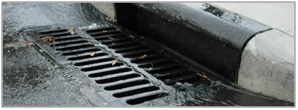 Nonpoint source pollution
Nonpoint source pollution generally results from land runoff, precipitation, atmospheric deposition, drainage, seepage or hydrologic modification. The term "
nonpoint source" is defined to mean any source of water pollution that does not meet the legal definition of "point source" in section 502(14) of the Clean Water Act. That definition states:
The term "
point source" means any discernible, confined and discrete conveyance, including but not limited to any pipe, ditch, channel, tunnel, conduit, well, discrete fissure, container, rolling stock, concentrated animal feeding operation, or vessel or other floating craft, from which pollutants are or may be discharged. This term does not include agricultural storm water discharges and return flows from irrigated agriculture.
Unlike pollution from industrial and sewage treatment plants, NPS pollution comes from many diffuse sources. NPS pollution is caused by rainfall or snowmelt moving over and through the ground. As the runoff moves, it picks up and carries away natural and human-made pollutants, finally depositing them into lakes, rivers, wetlands, coastal waters and ground waters.
http://water.epa.gov/polwaste/nps/whatis.cfm
As the definition states, the movement of water "over and through the ground" is a primary means by which water can become polluted by diverse sources that are found across the Massachusetts landscape. Examples of common NPS pollutants and associated land uses include:
- Excess fertilizers, herbicides, and insecticides from residential areas and agricultural lands;
- Oil, grease, and toxic chemicals from urban runoff, waste disposal, and energy production;
- Sediment from improperly managed construction sites, crop and forest lands, and eroding streambanks; and
- Bacteria and nutrients from livestock, pet wastes, and faulty septic systems.
In Massachusetts and throughout the United States, tremendous advances have been made over the past 25 years to clean up the aquatic environment by controlling point source pollution from industries and sewage treatment plants. According to the USEPA, states report that NPS pollution is the leading remaining cause of water quality problems (
http://water.epa.gov/polwaste/nps/whatis.cfm). The effects of NPS pollutants on specific waters vary and may not always be fully assessed. However, these pollutants are known to have harmful effects on drinking water supplies, recreation, fisheries, and wildlife.
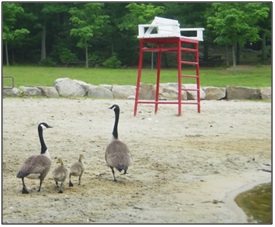
Where Does NPS Pollution Occur?
NPS pollution can occur anywhere. It can be found in polluted stormwater runoff entering lakes in Berkshire County, flowing off the streets of Worcester, and contributing to shellfish bed closures on Cape Cod. However, the prevalence of certain NPS pollutant sources and their degree of impact on receiving waters is often strongly correlated with specific land uses and the density of land development. For example, NPS pollutants associated with pet waste (i.e., bacteria, nutrients) will generally be more prevalent in densely populated areas that have more pets. In addition to often having a higher prevalence of NPS pollutant sources, more densely developed areas typically have less forest and other naturally vegetated lands that can act as a buffer between NPS pollutants and water bodies.
The major categories of NPS pollution sources in Massachusetts, as described below, include:
- Developed Areas
- Transportation
- Agriculture
- Forestry
- Hydromodification
- Atmospheric Deposition
- Landfills, Contaminated Areas and Waste Management Sites
- Natural Resource Extraction

a.
Developed Areas
This category includes a wide range of activities and issues associated with buildings, lawns, roads, marinas, and other structures. With denser development there is an increase in impervious surfaces, which impact local hydrology by reducing the area where precipitation can soak naturally into the ground. Developed areas also increase the amount of pollutants – such as fertilizers, septic system leachate, and motor oil from vehicles – that can be carried by stormwater runoff into water bodies and wetlands. Developed sites range in size from backyards to golf courses, single-family homes to skyscrapers, and from small dirt roads to highways. Within this category, possible pathways for NPS pollution to enter surface and groundwater include:
- Stormwater Runoff: This includes water that flows on and over buildings, grassed areas, parking lots, and other features found within cities, towns, and rural communities. Runoff from impervious areas includes highways, roads, parking areas, rooftops, and similar facilities. Since, by definition, water cannot infiltrate into the ground from impervious surfaces, NPS pollutants on these surfaces are washed via rain and snowmelt into storm drains and adjacent waterbodies. Runoff from pervious areas, such as lawns, parkland, recreational areas, and golf courses also contribute pollutants. Contamination of runoff and groundwater from applied fertilizers, pesticides and other materials such as wastes from domestic animals are common NPS pollution issues. Stormwater runoff from developed areas is also typically warmer than runoff from undeveloped areas, and can contribute to thermal impacts to water bodies.
Within developed areas, street drains receive runoff from the land, building roofs, pavement, and through infiltration/inflow from groundwater. Street catch basins are often receptacles of accidental and illegal dumping of wastes, including waste oils. As such, storm drains are a potential conduit for nearly any type of NPS pollutant. Past practices of locating drain outfalls at ponds, streams, and estuaries has resulted in direct contamination of water bodies with pollutants including heavy metals, sediment, particulates, organic matter, nutrients, and bacteria. Structures such as dry wells, catch basins, and similar structures designed to discharge untreated stormwater runoff and cooling water into the ground are conduits for NPS pollution. If designed, sited, and constructed correctly, many infiltration devices can be positive controls and not sources of pollutants. Finally, BMPs that are intended to treat NPS can become sources of NPS if they are not properly designed, operated, and maintained.

-
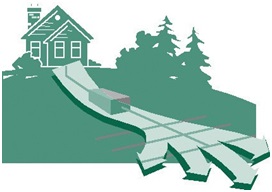 Onsite Wastewater Disposal Systems: Also called septic systems, these systems are intended to treat wastewater effluent from homes and businesses in areas that are not served by sewers. This includes traditional systems comprised of septic tanks and leach fields as well as innovative and alternative systems that provide advanced treatment. Properly designed, sited and maintained septic systems provide effective treatment of pathogens and phosphorus. Nitrogen is less effectively treated, although several innovative and alternative designs show promise. Achieving optimal nitrogen removal is especially important in coastal areas, as nitrogen is a cause of severe water quality degradation in marine environments.
Onsite Wastewater Disposal Systems: Also called septic systems, these systems are intended to treat wastewater effluent from homes and businesses in areas that are not served by sewers. This includes traditional systems comprised of septic tanks and leach fields as well as innovative and alternative systems that provide advanced treatment. Properly designed, sited and maintained septic systems provide effective treatment of pathogens and phosphorus. Nitrogen is less effectively treated, although several innovative and alternative designs show promise. Achieving optimal nitrogen removal is especially important in coastal areas, as nitrogen is a cause of severe water quality degradation in marine environments.
System failures caused by improper operation and maintenance or poor design commonly result in above-ground breakouts of untreated leachate that may contaminate surface and groundwater with nutrients and pathogens. Commercially sold septic tank additives, disposal of pharmaceuticals, and introduction of other improper materials can be a source of toxic organic compounds that are not treated by the system and a cause of catastrophic system failure.

-
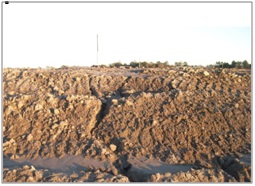 Construction Site Erosion: Removal of vegetation and the excavation and grading associated with construction sites can result in increased rates and volumes of runoff. Sheet, rill, and gully erosion may result from these changes. As construction sites are built out, increased impervious surfaces can increase runoff and cause offsite erosion or related NPS pollutant issues.
Construction Site Erosion: Removal of vegetation and the excavation and grading associated with construction sites can result in increased rates and volumes of runoff. Sheet, rill, and gully erosion may result from these changes. As construction sites are built out, increased impervious surfaces can increase runoff and cause offsite erosion or related NPS pollutant issues.
-
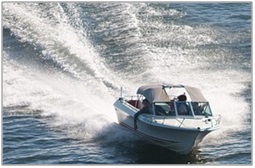 Boating and Marinas: Commercial and recreational boat mooring and fleeting facilities are unique sources of NPS pollution. Boat washing, fueling, and septage off-loading are potential sources of NPS pollution. Fleeting facilities where bulk or liquid materials are loaded or unloaded can also be sources of NPS pollution.
Boating and Marinas: Commercial and recreational boat mooring and fleeting facilities are unique sources of NPS pollution. Boat washing, fueling, and septage off-loading are potential sources of NPS pollution. Fleeting facilities where bulk or liquid materials are loaded or unloaded can also be sources of NPS pollution.
b.
Transportation
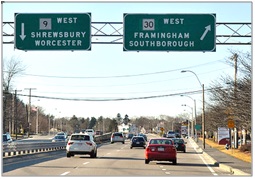
This category includes a variety of activities involving the creation, maintenance, and use of corridors for transportation. This includes roads, railroads, and airfields, as well as support areas such as marshalling yards, equipment storage, and maintenance facilities. NPS pollutants may originate from vehicles that use transportation corridors, from materials transported, or from routine maintenance activities. Construction of new corridors frequently crosses or comes close to drainage ways, streams, and other waterbodies. Erosion of soil from disturbed areas may directly enter waters. Reconstruction activities, including resurfacing, and ditch/slope maintenance can result in runoff of petroleum products and erosion of soil from disturbed areas. An increase in rates and volume of runoff may also be caused by land use changes associated with transportation corridors. Improperly sized culverts and roadway encroachment on stream channels increase watershed vulnerability to hydrologic instability and the impacts of climate change. Specific issues include:
- Highways, State Roads, Streets: The impervious surface on streets and highways allows the buildup of NPS pollutants that are readily washed away by rain events. In addition to the runoff of oils and greases from vehicles, NPS pollution comes from the use of road salts, sand, and other deicing compounds. Roadway deicing storage areas are potential sources of NPS pollutants to both surface and groundwater. Spills or accidental releases of transported materials are a potential source of NPS pollution.
- Rural Roads: Unimproved roads may be sources of sediment and dust. In addition, tacifiers and related compounds can be washed off roads during rainfall events.
- Railroads: Oils, greases and fuel are potential sources of NPS pollution. Additionally, areas where bulk or liquid materials are loaded/unloaded from railcars can be sources of a variety of NPs pollutants.
- Aviation: Chemicals associated with deicing, as well as aircraft maintenance areas are sources of NPS pollutants.
c.
Agriculture
This category includes activities that occur on land and water that focus on the production of crops and livestock, as well the storage, management, and use of materials such animal feed, fertilizer, pesticides, and waste products. This broad category encompasses cranberry bogs, cornfields, orchards, vegetables growing, confined animal operations, and shellfish beds. Although not commercial in nature, small hobby farms, horse stables, home gardens, and similar small-scale activities also generate agricultural NPS pollutants. Many of the day-to-day activities associated with agriculture manage NPS pollution with voluntary BMPs, tailored to the unique aspects of a given operation. Some NPS pollution from agriculture comes from the unintentional misuse of regulated chemicals or inappropriate application of fertilizers or other inputs. Animal husbandry practices, particularly collection and management of manure and the management of barnyard runoff, also influence NPS. Within the agriculture category, possible pathways for NPS pollution to enter surface and groundwater include:
-
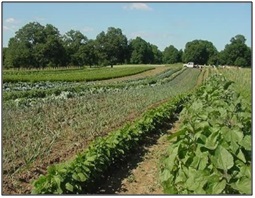 Croplands and Gardens: The two major sources of potential surface and groundwater contamination from agricultural cropland are nutrient and pesticide/herbicide runoff. Nutrient contamination may result from the over application of inorganic (commercial fertilizers) and organic (manure) fertilizers. These fertilizers may contain highly water-soluble nitrogen compounds that have the potential to leach to groundwater. Conversely, less water-soluble nitrogen compounds are subject to surface runoff into surface water bodies. Pesticide and herbicide contamination may result from products that are used to control a wide variety of insects and undesirable plants. If not properly applied, excess chemicals can be carried into surface and groundwater from rain or irrigation. Pesticides and herbicides have the potential to contaminate surface waters from erosion in the same manner as nutrients. Another potential source is wash or rinse water from pesticide/herbicide spraying equipment. Water used to clean the inside of spray tanks or equipment is often drained in a small land area that may lead to groundwater contamination. Lastly, cropland is subject to sheet, rill, and gully erosion when surface runoff is not properly managed, resulting in sediment deposition and loading of associated pollutants to adjacent waterbodies. Conservation tillage practices and cover crops can greatly reduce this NPS pollution threat.
Croplands and Gardens: The two major sources of potential surface and groundwater contamination from agricultural cropland are nutrient and pesticide/herbicide runoff. Nutrient contamination may result from the over application of inorganic (commercial fertilizers) and organic (manure) fertilizers. These fertilizers may contain highly water-soluble nitrogen compounds that have the potential to leach to groundwater. Conversely, less water-soluble nitrogen compounds are subject to surface runoff into surface water bodies. Pesticide and herbicide contamination may result from products that are used to control a wide variety of insects and undesirable plants. If not properly applied, excess chemicals can be carried into surface and groundwater from rain or irrigation. Pesticides and herbicides have the potential to contaminate surface waters from erosion in the same manner as nutrients. Another potential source is wash or rinse water from pesticide/herbicide spraying equipment. Water used to clean the inside of spray tanks or equipment is often drained in a small land area that may lead to groundwater contamination. Lastly, cropland is subject to sheet, rill, and gully erosion when surface runoff is not properly managed, resulting in sediment deposition and loading of associated pollutants to adjacent waterbodies. Conservation tillage practices and cover crops can greatly reduce this NPS pollution threat.
- Barnyards/Animal Feeding Operations: Runoff of animal wastes, particularly where large amounts of animals or wastes are kept, may result in the direct runoff of nutrients and bacteria into surface waters. Manure piles and holding areas in close proximity to surface waters, or that drain into conduits to surface water bodies, pose a particularly large threat. These threats are magnified for manure storage lagoons that hold large amounts of animal wastes. Significant groundwater impacts from animal holding or animal waste storage areas are also possible in areas where the water table is high or where infiltration rates are high. Lastly, animal watering and feeding areas can become denuded of vegetation due to high traffic and can become sources of soil erosion.
- Production: Another potential NPS pollution source is wash and processing water. Milk room wash water and crop cleaning and processing wash water have the potential for contaminating surface or groundwater when not properly treated or managed.
-
Grazing: Pollution of surface and groundwater may occur from overgrazing, grazing near waterways, removal of riparian vegetation, overstocking of pastureland resulting in the loss of cover, and the direct discharge of animal manures to waterways and water bodies. Animals allowed in or near streams will directly contaminate water, and will cause watershed instability when hoofs destroy riparian vegetation that would otherwise stabilize banks and channels. In addition, groundwater contamination may occur in a similar manner to those described for organic manure loading.
- Irrigation/drainage: Cropland that receives additional water through alterations to drainage or application via pumps and other appurtenances is more vulnerable to erosion and runoff of chemicals and nutrients. Excess water that cannot be used by plants or absorbed into soil can carry NPS pollutants to surface waters. Sub-surface drainage, such as field tiles, can enhance the transport of NPS pollutants to both surface and groundwater.
-
Specialty Crops: Cranberries are an example of a specialty crop that may have direct impacts on surface waters. Due to the required cultural practices for growing cranberries, large amounts of water are used for irrigation, frost protection, and harvesting. The water used in cranberry bogs is typically obtained from surface waters close to the bogs. This water is normally drawn from the water body, used and retained as required, and returned to the water body. Excessive or improper application of fertilizers and pesticides, as well as accidents and vandalism, may result in direct introduction of pesticides and fertilizer to adjacent surface waters. Another potential impact may result from the aerial application of pesticides to cranberry bogs. Due to the close proximity of cranberry bogs and surface waters, pesticide drift may occur and result in direct input of low levels of pesticides to surface waters.
-
Aquaculture: Also known as fish or shellfish farming, aquaculture refers to the breeding, rearing, and harvesting of plants and animals in all types of water environments, including ponds, rivers, lakes, estuaries, and the ocean. It produces food fish, sport fish, baitfish, ornamental fish, crustaceans, mollusks, algae, sea vegetables, and fish eggs. Aquaculture includes the production of seafood from hatchery fish and shellfish that are grown to market size in ponds, tanks, cages, or raceways. This category also includes the growing of aquatic plants used in a range of food, pharmaceutical, nutritional, and biotechnology products. These operations have the potential to cause NPS pollution from nutrients (typically from excess food/nutrient supplements that break down in water), chemicals (e.g., anti-fouling agents/biocides), and waste products from biota.
d.
Forestry
This category includes activities focused on the management of forested areas for the purpose of planting and harvesting trees for timber and associated wood products. Within this category, possible pathways for NPS pollution to enter surface and groundwater include:
-
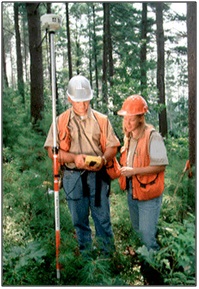 Harvesting: Activities associated with cutting and removing timber can cause increased soil erosion. Access and skid roads, stream crossings, and log landings are the primary sources. Increased erosion can result in suspended or bed load sediments in streams, ponds, reservoirs, and lakes. Clear-cutting or patch-cutting large areas may result in hydrologic modifications that could cause accelerated channel or sheet erosion.
Harvesting: Activities associated with cutting and removing timber can cause increased soil erosion. Access and skid roads, stream crossings, and log landings are the primary sources. Increased erosion can result in suspended or bed load sediments in streams, ponds, reservoirs, and lakes. Clear-cutting or patch-cutting large areas may result in hydrologic modifications that could cause accelerated channel or sheet erosion.
- Reforestation: Site preparation may result in the temporary loss of cover and result in sheet and rill erosion. Use of herbicides to suppress existing vegetation may result in water contamination.
- Christmas Tree Plantations: Site preparation and annual weed control with herbicides may result in accelerated sheet and rill erosion and water contamination.
- Harvesting Equipment: Spillage and leakage of stored fuels or power equipment may result in water contamination.
In Massachusetts, potential NPS pollution impacts associated with forestry are primarily addressed through continued implementation of the
Massachusetts Forest Cutting Practices Act and its coordination with Wetlands Protection Program performance standards, and pro-active education on efforts such as forestry BMPs. The statewide MADCR Forest Stewardship Program exists to offer technical assistance and outreach efforts to the forest cutting community.
e.
Hydromodification
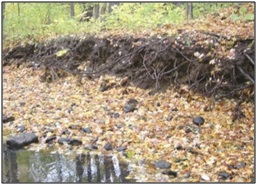
This category includes any anthropogenic alteration of the bed, banks, flow path, bottom depth, velocity, water volume, or water regime of a river, lake, stream, shoreline, or wetland. Historically, waterbodies have been reshaped for a variety of purposes, such as enhancing water supplies, flood control, drainage, and creation of areas to construct roads, buildings, and other structures. Massachusetts has over 3000 dams, with the Blackstone watershed having the highest dam density in the country. It is now recognized that these alterations have adverse effects on water quality and watershed stability, most often resulting in destabilized stream channels, head cutting of stream profiles, and displacement of water from wetlands filled or drained. Interference with natural channel process and hydrologic function leaves the watershed vulnerable to the impacts of climate change. Within this category, a number of NPS pollution pathways are recognized:
- Channelization: Maintenance or construction of ditches, channels, rivers, or alteration of natural channels to redirect flow may result in direct discharges of soil and sediment to flowing waters. Unstable channels, eroding slopes, and spoil material may erode, releasing sediments to water. Removal of riparian vegetation may cause temperature increase in downstream areas, stream scouring, increased flows, and flooding.
- Dam Construction/Reconstruction: Earth moving and construction activities may result in soil erosion and sediment delivery to waters. Thermal and hydrologic modifications frequently occur where the reservoir area or storage is large. Flooding of upstream wetlands may result in alterations in pH of unbounded waters and release of nutrients. Additionally, earthwork dams may also contribute sediments from erosion or failures.
- Earth Fills: Filling of wetlands and other natural storage areas may displace flood storage and alter peak downstream flows. Erosion of unstabilized fill may cause sedimentation in streams and lakes.
-
Streambank/Shoreline Erosion: Areas of denuded banks of streams and lakes can contribute increased amounts of soil to adjacent waterbodies. This type of erosion can result from enhanced or unnatural stream flows or increased wave action from watercraft. Bank stabilization techniques involving hard armoring may actually enhance bank erosion upstream and downstream of a given site due to increased water velocity or changes to the natural flow of water through a stream or river. Climate change can have a significant impact on watershed stability.
f.
Atmospheric Deposition
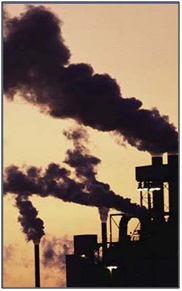
This category includes a wide range of activities that cause or contribute to the release of pollutants to the atmosphere. These pollutants eventually return to the landscape, often great distances from the original source. The atmosphere as a significant source of pollution to surface water and the effects of man-made sources were demonstrated by the impacts of acid rain (sulfur dioxide and nitrogen oxides: SO2 and NOx) on lakes, and later was found to cause mercury, polychlorinated biphenyls (PCBs), and nutrient impairment. Pollutant pathways include:
- Wet Deposition: Pollutants in the atmosphere can be picked up by precipitation or act as condensation nuclei for precipitation formation and thereby be deposited to surface water and land in the form of rain or snow.
- Dry Deposition: Particles in the air are deposited onto surface water and land surfaces at a rate that depends on the particle size, wind speed, and other factors. Gaseous pollutants can also be deposited to water and land.
- Volatilization: Previously deposited gaseous and semi-volatile chemicals, such as mercury and PCBs, can be re-emitted to the atmosphere as the result of many factors, including chemical reactions and changes in temperature or wind speed.
Air pollutants are not only deposited directly to the surface of waterbodies, but are also deposited to the surrounding land and then enter surface waters indirectly through stormwater runoff and groundwater seepage. Two major issues arise from atmospheric deposition – precipitation containing NPS pollutants, and clean precipitation that causes air-deposited pollutants to run off surfaces and into waterbodies. Addressing these pollutants at the source, typically through existing regulatory requirements, is the first line of defense. The use of alternative energy technology can significantly reduce atmospheric NPS.
g.
Landfills, Contaminated Areas, and Waste Management Sites
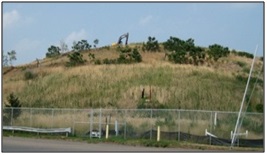
This category includes activities related to consolidation and management of wastes generated by residential, commercial, and industrial processes, including sewage. Many of these activities are regulated, and extensive requirements are typically placed on these sites. However, the potential for offsite transport of NPS pollutants remains, as does the potential for better management with improved BMPs. Possible pathways for NPS pollution to enter surface and groundwater include:
- Landfills: This includes both operating and closed landfills that are or have been used for disposal of garbage and other residential, commercial, and industrial wastes considered non-hazardous material. Surface runoff from these areas may contribute sediment to nearby waters and transport a variety of contaminants washed from the material. The decomposition of these wastes generates large volumes of liquids, which mix with other accumulated depositions to form a variety of compounds that may percolate to surface and subsurface waters.
- Hazardous Waste Areas: These may be located over defined or non-defined areas where hazardous wastes of chemical, biological, or mineral material is stored, has been stored, or is spread on the land. Contamination of surface and groundwater may result from runoff or percolation of water through the area.
- Brownfields: A brownfield is a property, the expansion, redevelopment, or reuse of which may be complicated by the presence or potential presence of a hazardous substance, pollutant, or contaminant. Contamination of surface and groundwater may result from runoff or percolation of water through the area, albeit at lower levels than a site contaminated with a classified hazardous waste.
- Organic Waters/Sludge/Septage: This includes treated and untreated plant and animal residues from food processing facilities such as shellfish depuration and fruit pumice, as well as approved sludge from anaerobic digesters, waste treatment plants, and septic tanks. Stockpiling of these materials or applications to the soil create a potential for runoff to surface waters. Some of these products are high in nitrogen, which may be discharged to ground and surface waters. Heavy metals are often associated with sludge from treatment plants serving industrial customers.
- Waste Application Areas: These are areas specifically identified for the application of liquid or solid agricultural waste such as milk room wastes, lagoon effluent, and liquefied manures. There is the potential for contamination by runoff and/or infiltration of nutrients, bacteria, and chemicals. This category also applies to areas specifically identified for approved applications of sludge, septage, or other non-farm wastes.
- Composting Areas: Land areas used for the composting of agricultural, industrial, and residential wastes may represent another potential source of pollution. The degree of potential contamination is difficult to determine since the threat is based on the types of materials that are being composted and the site-specific composting procedures. Materials that contain high levels of nutrients and that are exposed to rain represent an increased risk to groundwater or runoff to surface waters.
In Massachusetts, potential NPS pollution impacts associated with landfills, contaminated areas, and waste management sites are primarily addressed through the Massachusetts Superfund Law ( M.G.L. Chapter 21E), the Massachusetts Solid Waste Facility Regulations (310 CMR 19:00) and Regulations for Land Application of Sludge and Septage (310 CMR 32:00).
The Massachusetts Natural Resources Damages Program (NRD) also plays a role in mitigating impacts associated with releases of oil or hazardous materials and substances. Where appropriate and consistent with other program goals, the NPS Program will coordinate with the NRD Program to address mutual restoration goals and leverage s.319 grant projects (e.g., help provide match requirement).
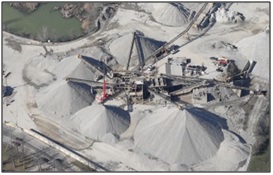
h.
Natural Resource Extraction
This category includes activities dedicated to the recovery of sand, gravel, rock, oil, natural gas, and other natural materials that are obtained by excavation, drilling, boring, or other methods. Within this category, possible pathways for NPS to enter surface and groundwater include:
- Surface Extraction Areas: These are gravel pits, surface mines, and similar areas. Exposed soil and mineral resources are subject to wind and water erosion. Both surface and groundwater hydrology may be changed due to these land use changes.
- Processing Facilities: Sorting, washing, and other processing facilities or storage of extracted and waste resources may contribute dust and solids to nearby waterways.
- Offshore Drilling Areas: These operations run the risk of releasing oil or related material to the offshore waters, thereby causing coastal pollution and marine fisheries habitat pollution.
In Massachusetts, potential NPS pollution impacts associated with natural resource extraction are primarily addressed through implementation of the Federal Clean Water Act, Sections 401, 402, and 404. In addition, municipalities may enact local bylaws to further control potential impacts associated with natural resource extraction.